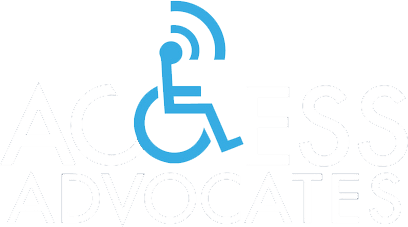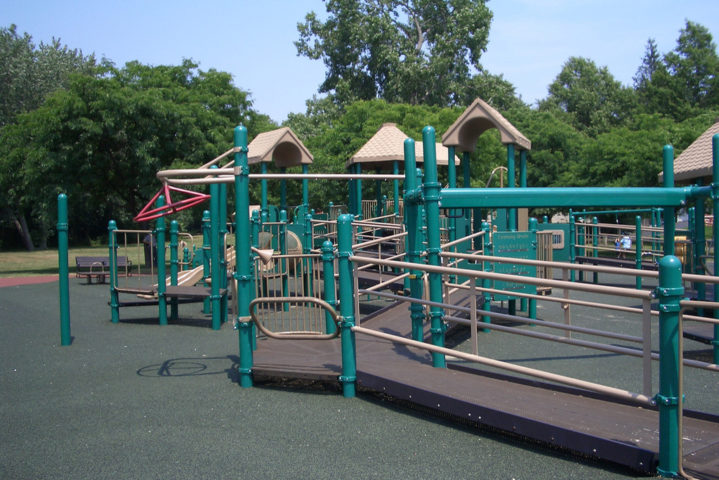March 2012 marked the deadline for all schools, licensed childcare centers, and municipal playgrounds to become compliant with the Americans with Disabilities Act of 2010 (ADA). Now is a good time for a reminder about what an ADA compliant playground looks like.
In brief, an ADA compliant playground will:
- Be accessible via ramps and/or paved, barrier-free travel routes;
- Include a range of accessible play options; and
- Provide an appropriate surface beneath all accessible equipment.
Guidelines are designed to ensure a variety of opportunities for children of all abilities. “Play components” are described and counted based on the type of experiences they provide–swinging, sliding, spinning, climbing, and role playing, for example. Components and their requirements are differentiated asground-level or elevated.
Ground Level vs. Elevated Components
Ground Level Components stand alone as a single experience and are accessed and exited at ground level. Stand-alone swingsets, solitary slides, see-saws, and diggers are examples of ground level components.
At least one of each ground-level play component must be accessible. The exact number of pieces required to be accessible varies depending on the number of total pieces. For example, if the playground offers four swings, at least one of them must be accessible. (See “Specific Guidelines” below for a link to Chapter 2 of the ADA standards.)
Elevated Components are accessed or exited above or below ground level and are part of a composite play structure (a structure linking multiple components). A double or triple slide connected to a composite structure is an example of an elevated component. Other elevated components might incude climbing walls, sliding poles, swinging bridges, and monkey bars. Even if the activities are entered or exited at ground level, if they are linked to a composite structure, they are considered an elevated component.
At least half of all elevated components must be accessible via barrier-free travel paths, ramps, and/or transfer systems. Like ground-level components, the number of elevated components required to be accessible, depends on the number of elevated activities offered in total. (See “Specific Guidelines” below for a link to Chapter 2 of the ADA standards.)
Specific Guidance
Specific requirements for the number of components required to be accessible for both ground-level and elevated activities can be found in Chapter 2, Section 240 (Play Areas) at the United States Access Board website.
Specific requirements for ramps, handrails, transfer systems, travel paths, turning space, and seats can be found in Chapter 10, Section 1008 (Play Areas), at the United States Access Board website.
We’d love to help you achieve an all-inclusive and ADA compliant play area. Contact us today.
Click here to see more ADA facts.
Photo credit: versageek/Flickr

